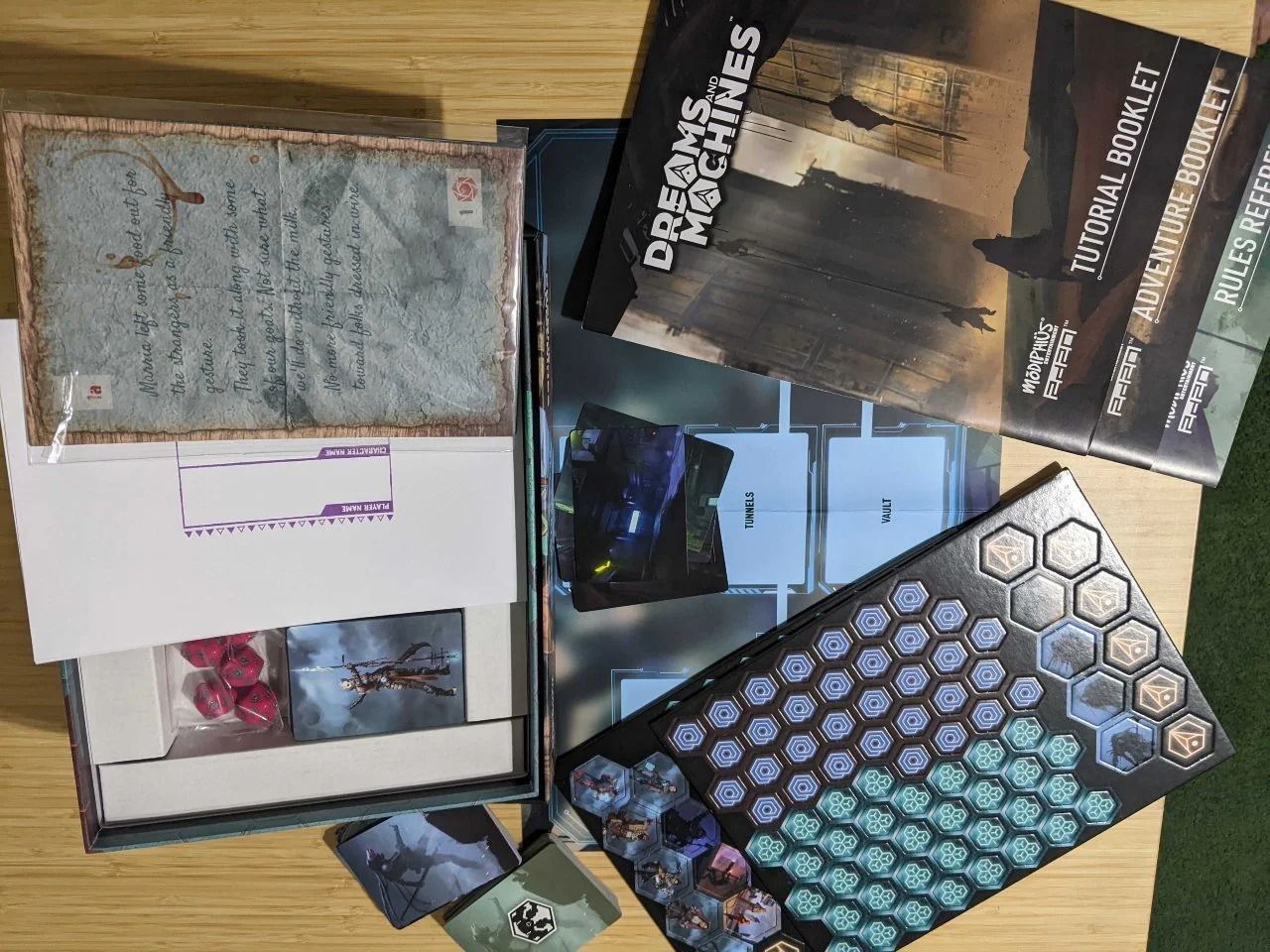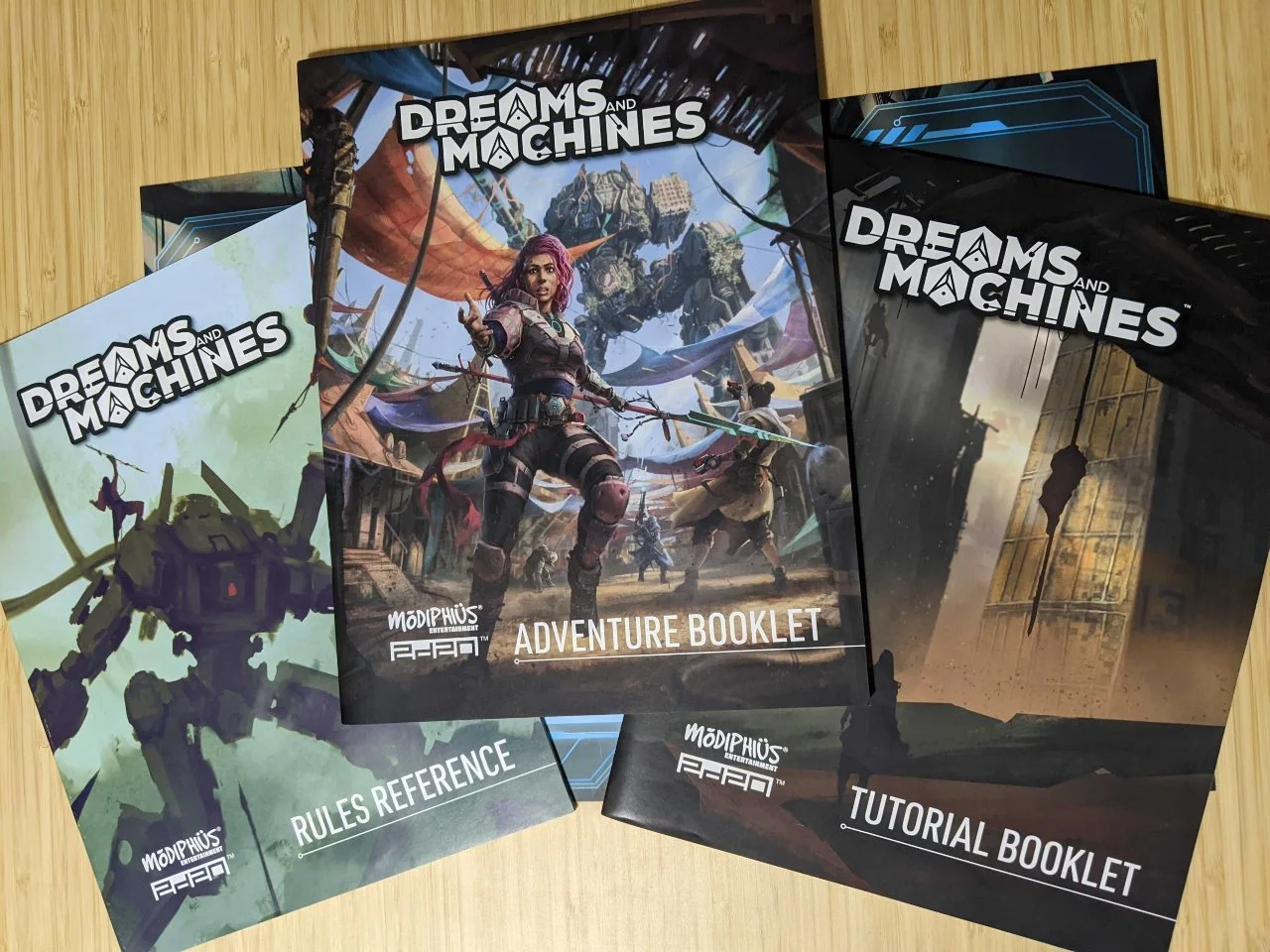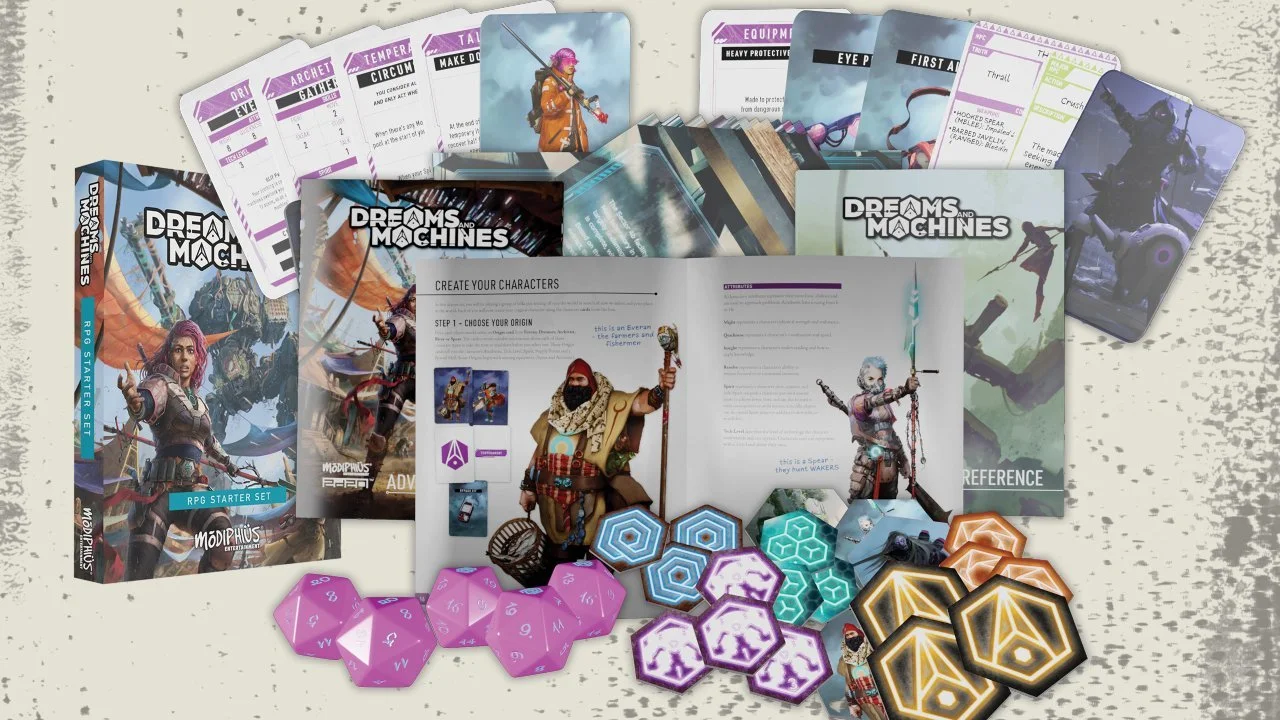Product Provided by Modiphius Entertainment
Creating a brand new world is always a task that can be a challenge, especially since it needs to be one with a core problem to work from, an introduction that easily pulls players into it, and a bunch of underlying lore to fill in the gaps. Being no stranger to creating tabletop role-playing games (TTRPG), Modiphius Entertainment’s CCO Chris Birch pulled off the brand new IP with their soon-to-launch title Dreams And Machines. Luckily, I was able to get a chance to check out the game before its full release and it is definitely an intriguing TTRPG, to say the least!
Lore
While this isn’t a section we usually have, I thought it would be good to go over the lore of this new game to help introduce interested players to what they are getting into. But, don’t let me reiterate it to you - instead, check out the gallery of images and read through their short descriptions!
This is straight out of the tutorial book and it is the first thing you read (along with an introductory paragraph). I have to say that I was impressed when I first saw this because it really does a fantastic job of bringing the world together and gives a showcase for the art style you can expect in the game.


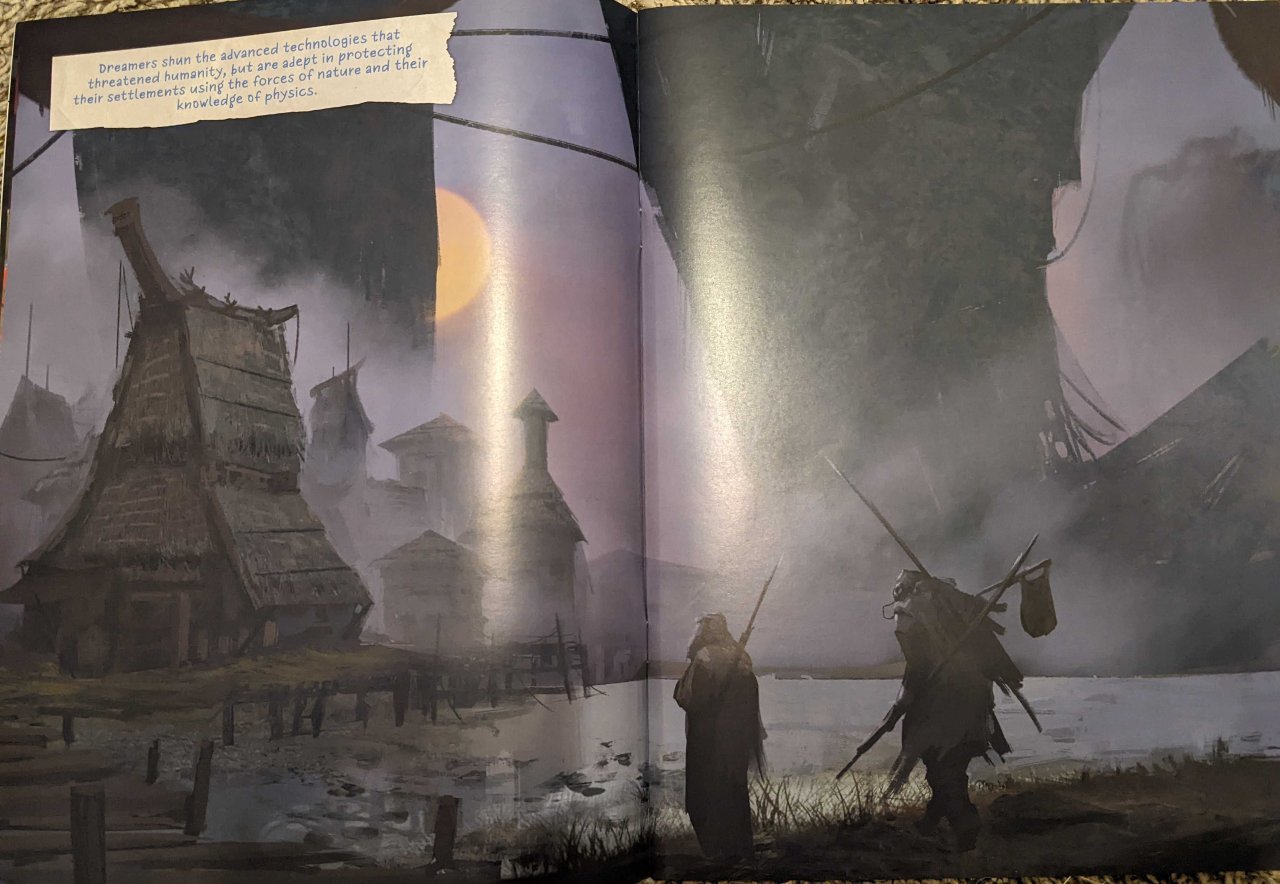
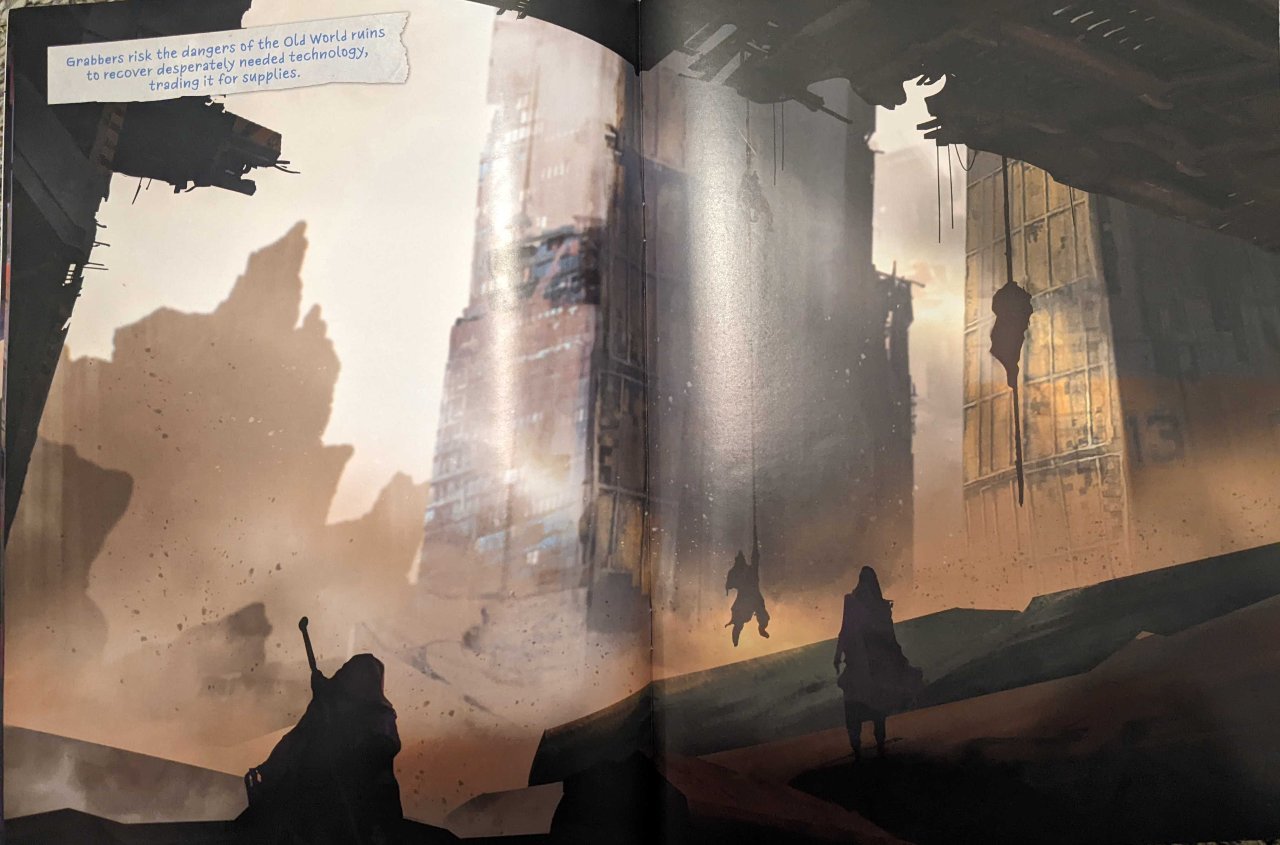
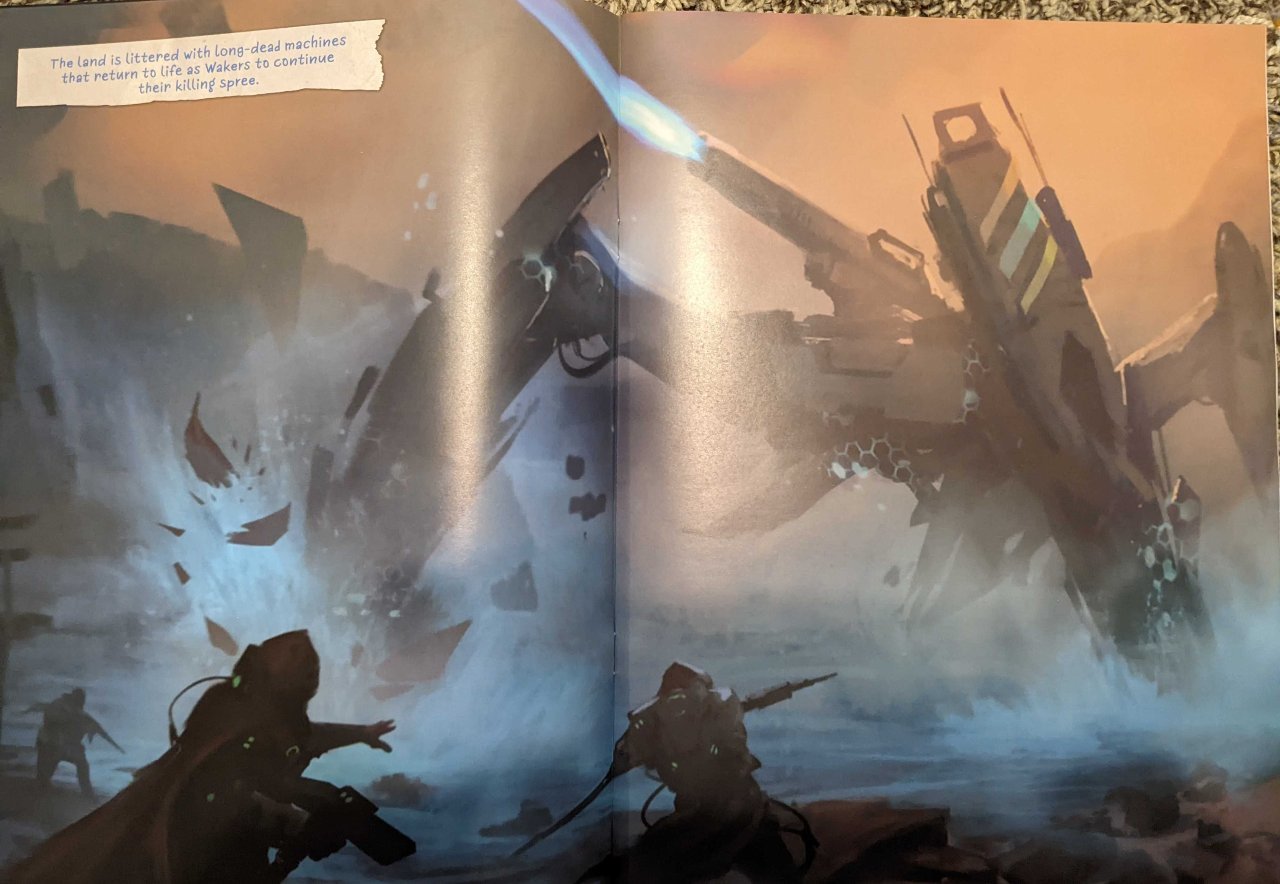
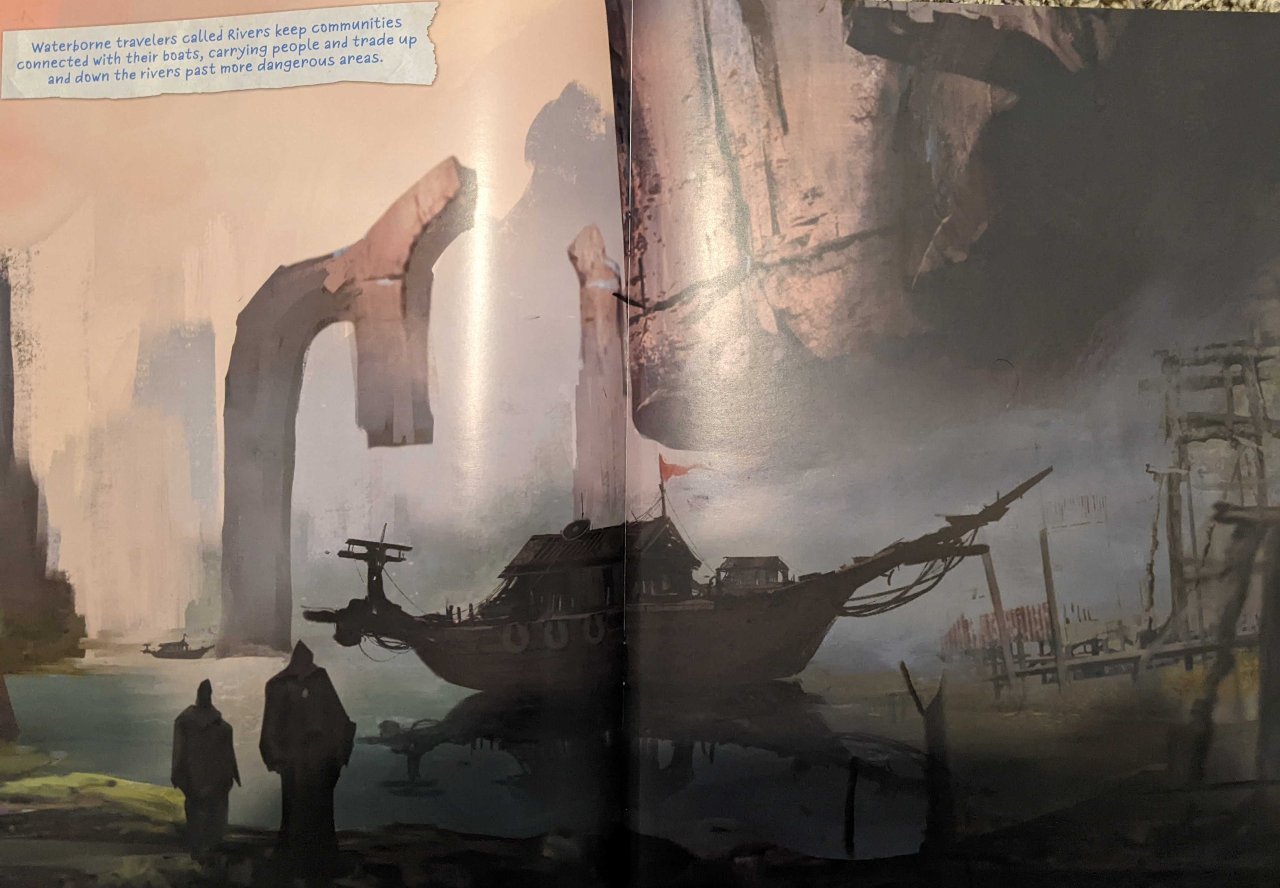
Gameplay
The first thing you need to do in order to play is get a few player characters together. Just like a lot of aspects of this game, this task is super simple. The game is all done through cards and so it is easy to get a character together. You pick what Origin you want, it will have two Archetype options to pick from, and you pick one of the Archetype cards from those choices. Then you pick a Talent card, which is again based on your Archetype, so make sure it matches. Finally, pick a Temperament card. With these cards selected, you have your character and all of the stats, starting equipment, and details to work with.
To better understand the character, it can be summarized as this: combine the Spirit and Supply Points from the Origin and Archetype cards. That is your total Spirit and Supply Points that your character starts with. All of the other points on the cards are for Tests (or as they say in Dungeons and Dragons, Skill Checks).
To dive into Tests, they are for actions in the game. When you go to do an action, if it isn’t specified in the module or by the game master (GM), then you have the chance to describe your action for the GM to apply an appropriate test for it. All Tests are done with 2D20s, but players can spend their Spirit points to use more D20s on a single Test - up to a max of 5D20s. A Test will always be an Attribute and a Skill, or a score from the character’s Origin and a score from the character’s Archetype. For GMs, they will always look like this: Attribute (Skill). For instance, if a player wants to hide, a GM could call for a Quickness (Sneak) test or if the player wants to attack with a melee weapon, that would require a Might (Fight) check. When the player rolls the 2D20, each number that MEETS or is UNDER the score they have is counted as a success. For instance, a player with Might 8 and Fight 1 that rolls a 1 and a 9 on their 2D20 will have a total of 2 successes - one success for being under Might and one for being under Fight. Each die gives the player 2 chances for success with this method. If there are any successes on top of the Test score, outside of combat, will be moved to Momentum.
Momentum is something that is used by the whole team of players. These actions can range from adding damage to an attack or picking up a defeated character. There is a full plethora of options for Momentum, but they are used by the whole team so make sure everybody is in agreement before points are used.
GMs aren’t just the punching bag in this campaign though. Just like players can use Spirit to give themselves extra dice or another form of aid to their actions, the GM gets to use Threat. Threat works almost the same as Spirit, but for the NPCs, scenarios, and combat. The main difference here is that if the GM runs out of Threat, they are just out, but if a player runs out of Spirit, their player is considered Exhausted. The only way to regain Spirit is to take a rest, which also refills the GMs Threat.
When running the game, they do a great job in the module to provide descriptive moments and even some dialogue for characters. Unlike most modules, it is VERY obvious what part is to be said to the players and what is for the GMs eyes only. The use of color coding is pretty awesome and useful for the GM. Plus, they have cards for each NPC, enemy, and even environments that players will go through so they can get an image to go with the location.
Now, before we move on, let’s go over combat in this game. They don’t suggest using a turn order system but rather letting the battle flow naturally. While I like that there isn’t a hard set rule of who goes when I did find my players falling into the classic turn order system style even without a counter on the side. This may be a hard habit to break for experienced players, but I am interested to see how others utilize this. As for the actual attacks, each attack is considered a Contest. Instead of rolling to attack, they have it set up where the defending character rolls first to Test how well they block. The attacker will then have to beat their number of successes in order to have a successful attack.
If they have the same number of successes or less, the attack is successfully blocked. If they have more successes than the defender, then the attack is successful. However, this is where aspects like Protection come into play. If Protection would block the extra number of Successes, the attack is blocked, but attackers can use assets like Powered weapons to use Breaker to bypass Protection to ensure it hits. There isn’t health in this game, so once a character takes a single hit they are considered Defeated. That said, a player can use Spirit and a GM can use Threat to make the amount of damage they would have taken to 0. If they don’t take damage, they are still up and ready for the next round of combat.
Even with all this explained, as with most TTRPGs, there are a lot of nuances and extra aspects that affect the gameplay and overall flow. Crazy ideas from players, items such as GLIFs and Stylus, along with a variety of moments and rules can, and will, have an effect on the journey. But that’s part of the fun of a new adventure, right?!
Modules and Enemies
Currently, this game comes with a single module. There is a one-shot module in the Tutorial Booklet that leads right into the main Adventure Booklet. Given that this game comes with everything needed for an in-person campaign, it’s an awesome start for what they can offer! If you look at what all is included, the envelopes are to hand out to each player so they can put their tokens and handouts in, making it easy to keep track between game sessions. Then there is the set of 5D20s and cards with images on one side and details on the other for both players and GMs to have an informative visual throughout the journey. Hell, at first I was a bit put off by the one single map they included with the Starter Kit, but realized that there are cards for each of the areas on that map that give the actual design of the place.
Overall, the artwork throughout the whole IP is phenomenal and they did an amazing job bringing players into the world, ready for adventure really quickly and easily. It is an impressive start, full of NPCs ranging from innocent and human to destructive, threatening mechanical enemies! It literally has everything you need to open the box, read it over, and start playing without another purchase or pulling any paper together to write down character and world details.
What It Could Have Done Better
With simplicity does come some issues. While playing through the Tutorial aspect, I found myself having a few questions about the combat. It took a while to figure it all out, but honestly, it was the lack of a few descriptions that threw off the moments. It would have been beneficial if there was an example combat sequence in the Tutorial book somewhere. Aspects like Protection were confusing to understand at first on what exactly they apply to and questions like, ‘does the armor break if I use that protection?’ and ‘if I toss my armor to absorb the damage, why would I also be Defeated if I wasn’t injured?’ came up. There were a number of other questions we got through during the tutorial playthrough, but we ultimately figured it out by piecing together the information in the Rules Booklet.
Even after we got the combat details figured out, we still found ourselves a little letdown. Ultimately, the combat comes down to a match of Spirit versus Threat, and it’s less about the actual attacks being made. Looking ahead, it doesn’t seem like enemies get much harder than the one in the Tutorial. Of course, there are definitely going to be aspects that make enemies in the later portions of the game more threatening, but the combat would still be Spirit versus Threat.
All that said in regards to combat, I do want to leave it with the note that this game seems to be more about providing a new adventure and an inviting TTRPG introductory experience. While I’m not fully on board with the combat system, I love that they managed to get everything in this game to function off the same 2D20 concept.
Verdict
Dreams and Machines is a wonderful TTRPG with an interesting world and one of the best introductions I’ve experienced! Having an easy-to-understand bit of lore thrown at the player, right at the beginning, really helps put everything in perspective. Then they followed it up with easy-to-make characters and a tutorial experience to practice playing with their 2D20 system. Best of all, that tutorial rolls right into the first Adventure Book module! If only their combat system was improved in some way and the sake of simplicity didn’t overtake some needed clarifications, this game would have been a flawless new IP. Even so, if you are looking to get into new TTRPGs - or even your first tabletop game ever - and don’t know where to start, this is a title I suggest checking out.
Dreams and Machines will initially drop at Gen Con on August 3rd. Interested users can pre-order the Dreams and Machines Starter Set today.
